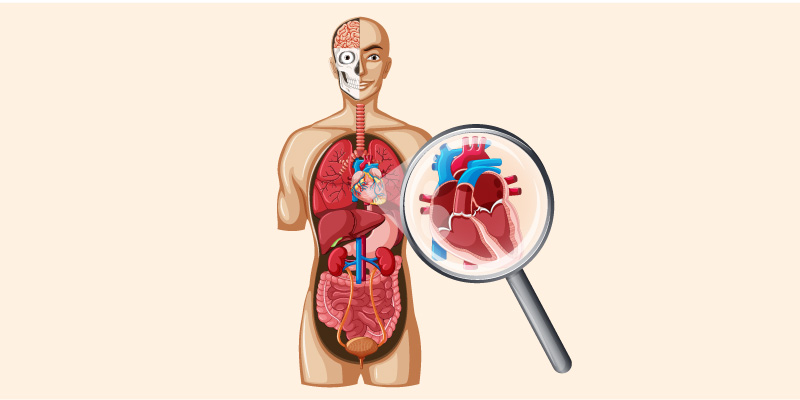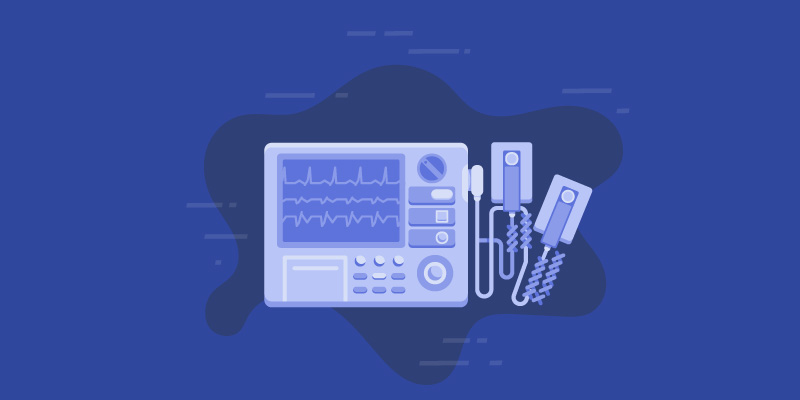Ventricular Fibrillation is a serious heart rhythm issue that happens when the heart beats rapidly with erratic electrical impulses. It is a cardiac arrhythmia that causes pumping chambers in the heart to shiver uselessly, instead of pumping blood. Triggered by a heart attack, Ventricular Fibrillation affects the blood pressure to drop down, discontinuing blood supply to the organs.
Ventricular Fibrillation requires urgent medical consideration because it makes the person collapse within seconds. It is the most common reason for unexpected cardiac death. This is why one should immediately seek professional help as soon as he/she notices any warning symptoms.
Some Common Facts about Ventricular Fibrillation
- Ventricular Fibrillation is a serious irregular heart rhythm issue.
- Ventricular Fibrillation is abbreviated as VF or VFib.
- VF is usually identified as arrhythmia in cardiac arrest victims.
- 65%-85% of cases with cardiac arrest have been identified with Ventricular Fibrillation by the emergency assistance staff.
- The National Center for Biotechnology Information (NCBI) conducted a study to examine the extent of Ventricular Fibrillation at the time of the cardiac arrest and on the first ECG.
- The study shows that the possibility of survival from VFib is approximately ten times more than those who are suffering from other cardiac arrest rhythms.
- According to the same study, the first ECG determined Ventricular Fibrillation in 43% of the patients. The rate of VF during the cardiac arrest was supposed to be 60-70% in the victims and 80-85% in the incidents with a probable heart disorder.
- Emergency treatment can prevent unexpected cardiac deaths.
- VFib treatments involve medications and implantable devices to restore a regular heart rhythm.
Causes of Ventricular Fibrillation

The heart pumps blood to different organs of the body and if the heartbeat is irregular, even for a while, it can lead to syncope or cardiac arrest. Fibrillation is a sudden quivering or shivering of muscle fibers. When this quivering occurs in the lower chambers of the heart, it is termed as Ventricular Fibrillation. It affects blood pressure and causes sudden cardiac deaths.
A heart attack is the most probable cause of VFib. Normally, it occurs when the heart muscle does not receive sufficient oxygen.
Situations that can lead to VFib involve:
- Heart attack
- Angina
- Electrocution injury or damage to the heart
- Congenital heart disease
- Heart surgery
- Heart muscle disease
- Medicines
- Extremely high or low potassium levels in the blood
Risk Factors of Ventricular Fibrillation
Factors that can enhance the risk of VF involve:
- A previous heart attack
- A previous occurrence of VFib
- Heart muscle disease (cardiomyopathy)
- A congenital heart disease
- Damages that cause injury to the heart muscle, like electrocution
- Usages of illegal drugs, like cocaine or methamphetamine
- Vital electrolyte irregularities, as with potassium or magnesium
Symptoms of Ventricular Fibrillation

The most common sign and symptom of Ventricular Fibrillation is the loss of consciousness because of the sudden discontinuation of blood flow from the heart to the brain and other parts of the body. However, some of the common symptoms of VF are:
- Chest pain
- Nausea
- Dizziness
- Shortness of breath
- Irregular heartbeat
- Palpitations
- Tachycardia
A situation in which the lower chambers of the heart beats too quickly is known as ventricular tachycardia or VT. This can lead to Ventricular Fibrillation. The common signs and symptoms of VT are:
- Loss of consciousness
- Dizziness
- Chest pain
- Nausea
- Shortness of breath
- Rapid heartbeat
- Tachycardia
Diagnosis of Ventricular Fibrillation

The diagnosis of Ventricular Fibrillation normally happens in emergency conditions because the victim has lost consciousness. The doctors will diagnose if the patient is in Ventricular Fibrillation on the basis of results from:
- Heart monitoring: A heart monitor records the electrical impulses that make the heartbeat and shows whether the heart is beating erratically or not.
- Pulse check: In VFib, the pulse will be hard to detect. It can be very weak or absent.
Tests to Diagnose the Cause of Ventricular Fibrillation
To know the reason of Ventricular Fibrillation, additional tests are conducted, which include:
- Electrocardiogram (ECG): ECG monitors the electrical activity of the heart through electrodes joined to the skin. The impulse is recorded as waves. It is either displayed on the monitor or printed on paper. The ECG shows whether the heart attack has occurred or is in the process because damaged heart muscle does not carry electrical impulses normally.
- Blood Tests: Blood samples are taken to test the presence of some heart enzymes that leak in the blood if the heart has been weakened by a heart attack.
- Chest X-ray: An X-ray image of the chest enables the doctor to examine the shape and size of the heart and its blood vessels.
- Echocardiogram: Echocardiogram employs sound waves to create an image of the heart. In this process, from a transducer, sound waves are directed at the heart. The sound waves produce video images of the heart.
- Coronary Catheterization or Angiogram: A liquid dye is injected by a long, thin tube known as a catheter, to determine whether the coronary arteries are blocked or narrowed. This liquid dye is normally fed through the artery in the leg, to the arteries in the heart. This helps in making the arteries visible on X-ray, showing areas of blockage.
- Magnetic Resonance Imaging (MRI): The MRI test estimates the ejection portion along with the heart arteries and valves. This can furthermore determine whether the victim had a heart attack and discover unusual reasons for heart failure.
Conclusion
Ventricular Fibrillation is a serious condition as it involves irregular heart rhythms. Seek professional help as soon as possible, if any sign or symptom of VF is noticed.




